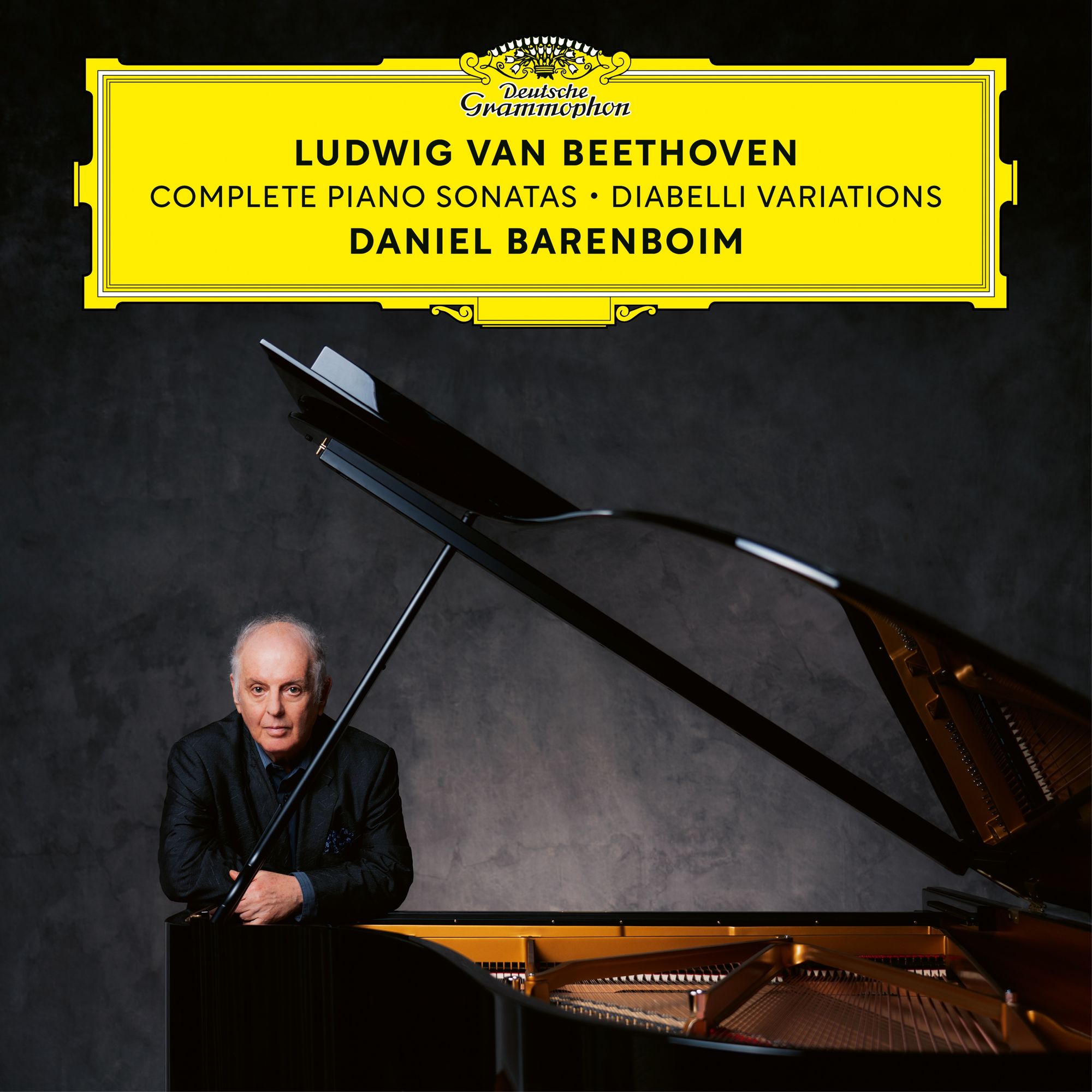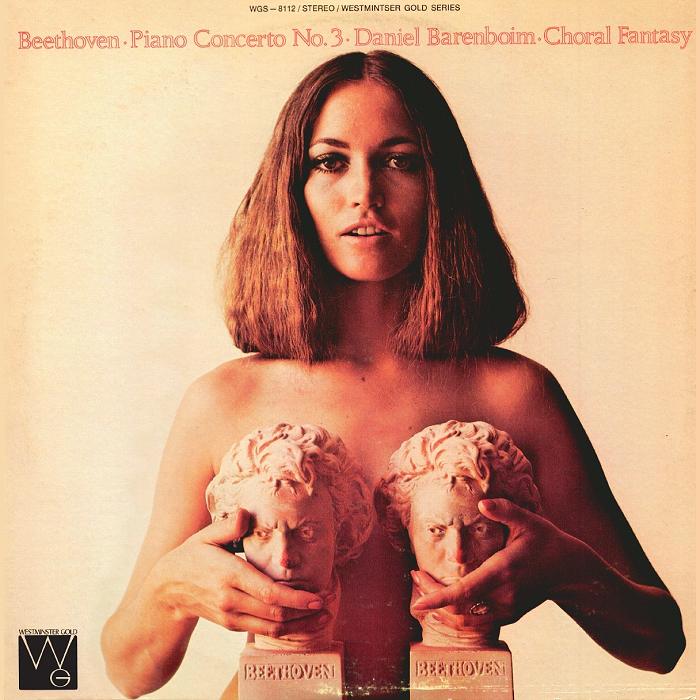Daniel Barenboim revisits the Beethoven Piano Sonatas
An invaluable survey of the 32 Sonatas; Barenboim is never less than stimulating, his mind as chock-full of curiosity as ever

This is hardly Daniel Barenboim's first Beethoven rodeo: this handsome product marks his fifth cycle (earlier ones date from the 1960s, 1908s, 1990s and 2000s). The 1960s cycle was for HMV (pre-EMI!), but we should not forget - and DG doesn't let us- that predating that familiar set (how I remember the LPs!) was a sequence of Beethoven Sonata recordings (and the Diabelli Variations) for Westminster, recorded in New York in March 1958. We are gifted six Sonatas from that period Opp. 13, 27/2, 53, 57, 106 and 111 (those readers who know their opus numbers will know that only the final sonata of that list - and indeed of the set - Op. 111, is missing a nickname).
Of course, this is not Classical Explorer's first rodeo either: we took on Martino Tirimo's more extensive Beethoven project here. Always nice to offer an alternative viewpoint, and its fair to say no-one would be disappointed with either.
And so, to Genesis (as my piano teacher used to call it)! The first of the theee sonatas of Op. 2, written at the very close of the eighteenth century. Barenboim's Op. 2/1 reveals a freshness that completely belies the pianist's years. The opening upward F minor arpeggio sprints its way upwards; left-hand sforzati are beautifully keen, yet Barenboim can let the music bend with the wind just the right amount; setting out his stall, the exposition repeat is intact:
Nothing sums up Barenboim's approcah to Beethoven in this set than the Menuetto: dignified beautiful (too beautiful?), patrician, with a remarkably placid Trio:
This is a sonata - and cycle - of remarkable emotive contrat, an intimate, beautiful . second movement, an ultra-rapid finale, clear, yet still finding space of lyricism.
What comes through more than anything is Barenboim's harmonic awareness throughout the cycle: those of Schenkerian bent will doubtless adore this. Such a projection of the large-scale can lead to the feeing that the music is running out of steam. Op. 2/2 shows us this as the later stages of the first movement sound laboured; and yet Barenboim makes the links between the ascending scales of the first and last movements brilliantly.
One has to admire Barenboim's finger detail in the great first movement of the C major Sonata, Op. 2/3, but it is the tenderness of the slow movement that really impresses:
Barenboim is persuasive about the genius of the E flat Sonata, Op. 7, providing the best single performance of this sonata to come my way from anyone. The superb piano recording supports Barenboim's sonorous sound; the apex of the performance (notwithstanding a properly disturbed Trio in the third movement) is the slow movement, interior, superb left-hand staccato, but most of all the fragmenting at the end of this "Largo con gran' espressione':
Another trilogy next: the three Sonatas, Op. 10. Full of incident, and subtleties. Arguably the first movement of the great D major, Op. 10/3 is more Allegro than Presto but Barenboim brings great clarity to this movement (as he does to all of op. 10). The slow movement of Op. 10/3, the "Largo e mesto" (slowly and sadly) is remarkable in its intensity of line (and listen to how Barenmboim works with the note-decays so intelligently):
Barenboim's great achievement in this sonata is to adjust for what is often heard as a lop-sidedness: two momentous first movements, a harmless Menuetto and a rondo-finale that ends, perhaps surprisingly, quietly. That Barenboim takes the finale more sedately than many elevates it, his confidence in his interpretation (or "reading," as Barenboim puts it) total.
The disc layout does mean Op. 10 is split across two discs; but it also highlights the quantum leap to Op. 10/3 and its kinship in terms of greatness with the "Pathétique". Many, I am sure, will have come to this Sonata via Barenboim's 1967 HMV LP, but here the power of Op. 13 is near-Brucknerian. The returns of the Grave in the first movement are monumental, the slow movement a dream. Perhaps there's some over-beautifying in the finale, but just listen to this first movement:
...and one has to admire how Barenboim elevates the two small sonatas of Op. 14 (as he is to later in the cycle with the two Sonatas of op. 49). The first movement of the E major, Op. 14/1, holds real mystery, and Barenboim elevates it to the status of a little gem. Op. 14/s (G major) holds quite some darama, too, always within the confines of the music, and almost eclipses my benchmark of Backhaus! Bet let's hear that Op. 14/1 (i):
As we move into the twenties in the opus numbers we hit the so-called "middle period". Given Barenboim's trademark lyricism, the superiority of his reading of the first movement of Op. 26, a set of variations, is unsurprising but nevertheless utterly glorious:
The two Sonatas, Op. 27 are heard in masterly performances, the Adagio con espressione of Op. 27/1 expansive and glorious. But it is the famous so-called "Moonlight" that triumphs, the first movement transcendently tranquil (a calm also exuded by the first movement of Barenboim's Op. 26 ), the finale a balancing pillar, fiery yet perfectly disciplined, the ideal balance:
The Op. 31 set sits as the great trilogy of the middle period. Give a piece a nickname, and it will become the most reacorded - a rule of thumb that stands up well here, as it's the "Tempest," Op. 31/2 that surely has the most recordings of the three. But Barenboim persuades me that op. 31/1 (G major) should be my favourite. Barenboim is something one does not always associate with him here - witty, nailing Beethoven's gruff humour and yet offering real sophistication too. But let's hear the florious Adagio grazioso (NOT Andante grazioso, as the box booklet claims), delivered with the most impeccable staccato touch. Here, Barenboim allows us to really hear the modernism of the writing:
When it comes to that "Tempest" Sonata, Barenboim finds great contrasts in the first movement. He's always re-thinking, never taking anything forgranted, always finding new aspects even after a lifetime's immersion. And so fascinating to hear how he reacts to each soata of Op. 31 differently. The first movement of Op. 31/3 (sometimes, but not so often, called "The Hunt") exudes a structural awareness Schnabel would be proud of; but listen then to what he does next. How modern he makes thie Scherzo sound. there's an unusual procession of movements in thsi sonata - a Scherzo followed by a Minuet lie between first movement and Presto con fuoco finale. How modern Barenboim makes the Scherzo sound, gestural through, the rapid right-hand ascents surely written-out glissandos:
... and contrast that with the beautifully delineated Menuetto, more of a hymn of thanksgiving than a dance:
If inevitably Barenboim's 1969 "Waldstein" (the performance that introduced me to the Sonata) exudes more vim than this 2020 performance, there is a compensatory sense of the vast to the later one. Barenboim's years of experience are so obvious, the first moveent superbly scaled and calibrated, the chordal sections perfectly judged, the time he takes at the end ideal, and no sense of a scrabble in the closing bars either. The "Introducione" to the finale is a micro-world in itself, so much more than a transition, the finale of Elysian depth. Here's the first movement:
For the "Appassionata," Barenboim takes his time, allowing the music - particularly the harmonies - speak. The fire of a young man has been replaced by the wisdom of an older gentleman; patrician might be the right word again, more Arrau than Pollini. In fact there's more of a parallel there than meets the eye: as in late Arrau, the coda seems to be the natural outom eof everything that has come before it. Magnificent - and one really does need to hear the sonata complete ....
The Sonata No. 24 in F sharp is sometimes seen as an oddity. That key! And only two movements - it's almost Schumannesque at times. Barenboim finds just the right way to explore, really lingering at the opening, leading perforctly into the Allegro and breathing welcoming wamth into the finale - a bonhomie that seems to extend to the youthful, smiling first movement of Op. 79:
It's quite a gulf to the "Les Adieux," one of the truly great Sonatas of all time. How Barenboim allows the burden of sadness of "Das Lebewohl," the first movement, to speak (and how masterly the finale, dismissing any criticism of the frailty of age in Barenboim's pianism).
If there is a weak performance in the set, it is Op. 90; there are passages in the finale which sound like it might disintegrate. But as we move into the Op. 100+ numbers, the truly Late Period sonatas, we find true resonance between composer and interpreter. Finest, perhaps, is the interpretatively tricky Op. 101. The second movement (Lebhaft, marschmäßig) is the hurdle at which most pianists fall; Barenboim allows us time to appreciate Beethoven's writing and the result is miraculous, and just listen to how Barenboim relishes the gaping rgistral spaces Beethoven created between treble and bass voices:
... and so to the "Hammerklavier". magisterial - and with the opening, Barenboim is slow enough to leave himself time for that perilous opening leap:
While the Scherzo verges on the cumbersome, Barenboim brings off the 20-minute Adagio sostenuto; but the finale does occasionally sound awkward, offset by moments of great beauty.
The final trio of sonatas is occasionally heard in a (soul-exhausting) single evening recital. It's certainly true to say that all three suite Barenboim's temperament to a tee, Op. 109 offering onr of the most perfect renditions available, the flow, the beauty, the lyricism of both outer movements completely unhurried.
Of the three, Op. 110 perhaps dips because of the under-voltage Allegro molto; it is Op. 111 where everything comes together. Listen to the all-embracing peace of the Arietta:
... and so ends a remarkable set of Beethoven Sonatas - but there's more. Just before he put down this cycle in the studiio, he gave a love performance (April 2020) of the Diabelli Variations in the Pierre Boulez-Saal. I have to confess a clear preference here for Tirimo, despite moments of great beauty.
And so from Berlin to New York and an earlier sequence of six sonatas . The hard-edged sound that greets us in the earlier "Pathétique" reminds us this is set in the late 1950s for the much-lamented Westminster label, a label of many highlights including recordings by the great conductor Hermann Scherchen, Maurice Abravanel and musicians such as Paul Badura-Skoda. And the label of fanciful record sleeves. I wonder what Barenboim thought of this one, for his Beethoven Third Concerto and the Choral Fantasy:

The Westminster Sonata performances are fresh as a daisy: listen to the impulsive, propulsive first movement of the "Pathétique," the superb "Moonlight" (the finale decidedly headlong), the highly gestural "Waldstein," the gripping "Appassionata" finale. The early "Hammerklavier" does threaten to be splashy in the first movement, and its scamper of a finale is close to a scrabble. Yet the freshness of Op. 111 is utterly captivating!
An invaluable survey of the 32 Sonatas (not 35 here, no Kurfürsten Sonatas, WoO 47); Barenboim is never less than stimulating, his mind as chock-full of curiosity as ever.
At the time of writing, this DG box is discounted by £12.25 by Amazon at the link below!
